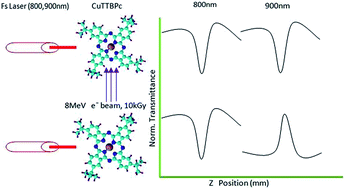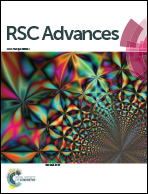Wavelength dependent nonlinear optical switching in electron beam irradiated CuTTBPc thin film
Abstract
The main aim of the present work is to investigate the role of 8 MeV electron beam interaction in modifying the linear and nonlinear optical (NLO) properties of thermally evaporated copper tetra tert-butyl phthalocyanine (CuTTBPc) thin films. The irradiation dose dependent change in linear optical band gap and roughness changes after electron irradiation have been explored. Third order NLO investigations were performed for unirradiated and 10 kGy irradiated CuTTBPc films with the femtosecond (fs) Z-scan technique at wavelengths of 800 nm and 900 nm. The unirradiated film depicted both reverse saturable and saturable kinds of nonlinear absorption behaviour as expected from the band gap restrictions on two photon absorption. A switch over to reverse saturable absorption within saturable absorption of the irradiated film at 900 nm laser excitation is explained using the irradiation induced band gap shifts of the material due to localized defects formation within the band gap region.


 Please wait while we load your content...
Please wait while we load your content...